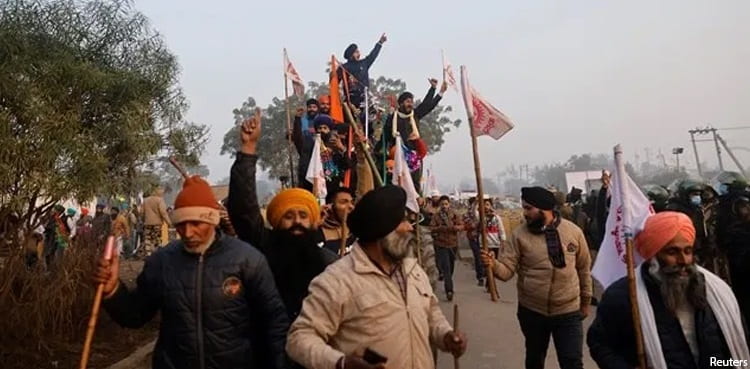
You may have heard or seen news about the ongoing farmers’ protest in India right now. This protest was sparked by three bills that were adopted by the Indian government in September 2020. These three bills primarily place the livelihood of these farmers from the state of Punjab at the mercy of corporations. The privatization of the agricultural economy will surely benefit the Indian government, but the farmers will suffer greatly since corporations will purchase their crops at a much lower rate, leading to generational debt which has already led to farmer suicide in India. To prevent the exploitation of their livelihood, the kisaans (“farmers”) have set out on a protest, the highlight of which has been their march from Punjab to Delhi, India’s capital. The Indian government, led by Prime Minister Narendra Modi, has not reciprocated the farmers’ concerns with any form of sympathy. Rather, senior leaders of the Indian government have called the protestors “anti-nationalist” and “goons.” Such a reaction from the government is not unusual for the Sikh farmers who have been the target of persecution by the Indian government multiple times in the past.
Historical Context
In the 1970s and 1980s, Punjabi Sikhs held similar views in regards to the Indian government’s support for agriculture, an industry which has always been essential to the Indian economy and still is with 60% of the Indian population reliant upon farming for its sustenance. Unfortunately, the Indian government reacted the same way it is in 2021 – by labeling the protestors anti-nationalist. Additionally, the government launched a series of egregious human rights abuses consisting of attacks on the Punjabi population in the 1980s, attacking the Golden Temple of Amritsar in June of 1984, launching a state-sponsored pogrom in November of 1984, and extra-judicial killings in the following decade. What is worse is that the Indian government has never acknowledged nor apologized for these events, giving the people of Punjab a reason to have grievances towards the government.
But the state of Punjab is not the only population that has been the prey of India’s ongoing human rights abuses. The rise of right-wing authoritarianism in India coincides with the ascension of Narendra Modi to the role of Prime Minister; Modi himself took part in genocidal violence in 2002 while presiding over Gujrat’s anti-Muslim pogroms as chief minister of the state. Though the current protests are pogroms, the Indian government has acted in an undemocratic manner with its press censorship, journalist detention , and violent crackdowns on the non-violent protestors.

What do the farmers want?
Farmer unions and their representatives have asked that the three farm acts passed by Parliament be repealed; they will not settle for anything less. The government proposed an 18 month delay of the laws to give the farmers time to adjust, which was also rejected. Between October 14, 2020 and January 22, 2021, eleven inconclusive rounds of talks have taken place between the government and union representatives. The farmers even suggested overthrowing the government on February 3, 2021 if the laws are not repealed.
The reasoning for the farmers’ escalating anger is two-fold: one, the human rights abuses the Indian government is inflicting on the non-violent protestors, including tear gas; and two, the failure of the Indian government and leaders to cooperate with the unions. To peacefully protest a set of acts is well within the rights of a people belonging to a democratic nation, but it is not the right of the government to respond to peace with violence and neglect the concerns being voiced by its people. That is not what a democracy is.
